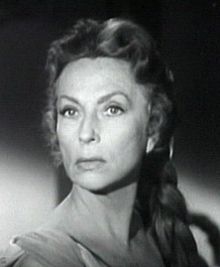One of the things Dave Wondrich continued to emphasize in Imbibe! is that the gin you read about in all of Jerry Thomas’ classic recipes is not the gin you’re thinking of. At all.
Today, when you say “gin,” people automatically assume you mean London dry gin, which is by far the most prevalent. Beefeater, Tanqueray, that sort of gin, and the similar Plymouth gin, and all its contemporary variations (from Hendricks to No. 209 to Aviation), despite their different flavor profiles, are all far more similar to each other than to the gin described in the Professor’s (and Dave’s) book. The gin they’re talking about in many of these old recipes is Dutch gin (to use a mildly inaccurate term), the precursor to London dry gin, which in Dutch is galled genever or jenever, and in the Professor’s day was called “Hollands gin.”
It’s very different stuff, and I had very little experience with it until fairly recently. Genever comes in two main varieties: jonge and oude, literally translated as “young” and “old,” but unlike most other similar appellations this doesn’t refer to the age of the spirit, it’s more the style. Oude is the one you want, distilled from malted barley (moutwijn, or “malt wine”), with some rye and corn; it’s “thick, malty and divine,” as Dave describes it. It actually has more in common with whiskey than with London dry gin, and Dave even recommends an emergency substitute for oude genever if you need some but can’t find any, a mixture of Irish whiskey, Plymouth gin and a little simple syrup (“not particularly adequate … [t]his works tolerably well in Punches and the like, but less so in Cocktails.”) Oude genever, in the old days, was considered a bit less than palatable on its own, and because of this herbs were added, including juniper berries (for which the Dutch term is jeneverbes, hence jenever or genever and then “gin”). Jonge is a clear spirit, dating from the World War I era, with a much more neutral flavor and very little maltiness; while it’s good too, I prefer the oude myself.
You may have a bit of a hard time finding it, but the first brand I managed to find fairly easily was Boomsma, which was available at all my local liquor haunts, as well as nationwide at BevMo. It’s cheap too — around $15 a bottle, and really tasty stuff. Unfortunately, the stuff from the Netherlands I really want isn’t available here at all — it’s called korenwijn, meaning “corn wine,” and it’s even older than genever. It’s a distilled malt spirit, and a precursor to the oude type of genever, but has a great character all its own. Philip Duff, who’s with Bols in the Netherlands, gave me a swig of korenwijn at Tales of the Cocktail, and my immediate reaction was “I want!”
Nowadays the premier genever readily available to us in the U.S. is Bols Genever, which is a really wonderful product. It’s clear but has a wonderfully robust malty flavor, and is Lucas Bols’ 1820 recipe. The stuff the Professor served probably tasted a lot like this.
So, what shall we do with our genever?! There was one cocktail in the book I zeroed in on and wanted to try right away. As we know, the original definition of the Cocktail (“more vulgarly called a Bittered Sling”) was a mixture of spirits, sugar, water (those two often in the form of gum syrup or simple syrup) and bitters (a “sling,” in its original definition, having been merely spirits, sugar and water). Around the mid-1860s to early 1870s we began to see “fancy” cocktails, which might add a dash or two of Curaçao, and an “improved” cocktail, which might add a bit of absinthe, a teaspoonful of maraschino or some other liqueur. This is the one I wanted to try, and lo and behold … it was a fantastic drink.
The Improved Hollands Gin Cocktail
(adapted from Imbibe!, by David Wondrich)
2 ounces Bols genever.
1/2 teaspoon maraschino liqueur.
1 teaspoon rich simple syrup (I made mine with Demerara sugar).
2 dashes Angostura bitters.
1 dash absinthe.
Lemon peel, twisted to express the oil.
Combine with cracked ice in a mixing glass, shake well, then strain into a fancy cocktail glass. The flavor is improved by moistening the edge of the cocktail glass with a piece of lemon.
Even though the Professor called for this drink to be shaken, I’m a stirrer when it comes to drinks composed of all spirits, wines and/or liqueurs; you can’t beat that silky smooth texture you get. As Dave says, “If you’d rather be right and stir, be right and stir. Then smile.”
We smiled a lot while drinking this cocktail. I could hop in the Wayback Machine, quaff these at The Professor’s bar and be very, very happy indeed.

 The Moorehead Cocktail
The Moorehead Cocktail



